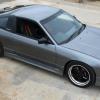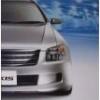Rich + More Ignition, Or Lean + Less Ignition, What Is A Safer Way To Tune?
Announcements
-
Similar Content
-
Latest Posts
-
Can you clarify what you mean by boost cut, do you mean it misfires both when under load (driving) and when stationary and out of gear? Or does the ECU pull power when it reaches a specific boost level that is too high (boost control issue)? Does it occur at idle with no throttle? When you say "the ECU is OK", what ECU is it and why do you think it is OK? Have you used the NEO ECU, and if so do you have a MAP sensor attached? Same for the AFM, why do you think it is OK? Do you have any way to put a fuel pressure gauge on it (even just a mechanical one between the fuel filter and fuel rail)?
-
Hi.. Just another problem. So maybe you can help. I(my mechanic) done swap from my RB20DE NEO to RB25DET NEO. Everything is OK but we have a boost cut. Coils/Plugs are ok...AFM is ok. ECU is ok. I have Walbro 255 but it "changed" sound few months ago(you can hear it ouside) you did not hear that when it was new(maybe faulty?) Sooo...what now? What can cause this boost cut? It is even when you standing still...
-
Not sure the US can import anything other than the C34 Stagea's, but if you can and you need to to tow, DO NOT under any circumstances get an M35 Stagea. If it is just as a family car and your country/state allows it, absolutely and definitely get an M35 (3.5L if possible as it is effectively a 350Z) over a C34.
-





Recommended Posts
Create an account or sign in to comment
You need to be a member in order to leave a comment
Create an account
Sign up for a new account in our community. It's easy!
Register a new accountSign in
Already have an account? Sign in here.
Sign In Now